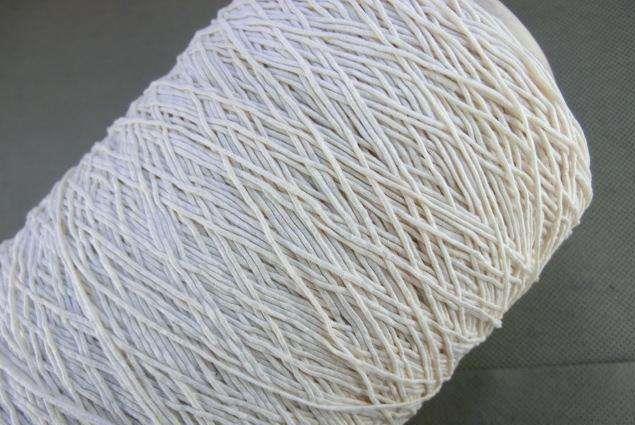What is cotton patterned yarn?
What is cotton patterned yarn?
Cotton type fancy yarn: The coarse and fine strip dry yarn is processed into recycled cotton from waste color cloth, mixed with waste cotton, and mixed with 20-30% good cotton during opening or drawing to make mixed color strips. It is then compressed and distributed into an irregular state by the skin roller of the roving machine, intentionally forming a stretching wave to produce irregular coarse and fine sections of dry yarn. This yarn has low single yarn strength and is generally used after being combined with ordinary colored yarn to add fabric fastness and achieve a convex or dotted appearance effect.

Cotton yarn is made by combining 16 green (or light green) yarns and 6 waste spun natural yarns. There are many cotton knots and impurities on the surface of the secondary 6 yarn, and the surface of the yarn after splicing forms similar small knot lines or flower spot effects. Window cloth that can be arranged with woven gauze. The covering thread twists two yarns with similar counts but different colors. A thread in which the half sides of two twisted yarns cover each other. The wavy appearance with alternating stripes creates a color effect in the fabric. The twisted curve consists of two core yarns, one low support decorative yarn, and one fixed thread; The decorative yarn is evenly wrapped around the core yarn, and then twisted in the opposite direction with the fixed thread. The second twisting process loosens the decorative yarn and separates it from the core yarn into concave and convex patterns. The resulting yarn is used as a high-end warm plush fabric. Wave thread is made by twisting one low count yarn and two core yarns or threads of different colors and counts at once. If it is used as a knitted fabric, the number of decorative yarns and the twisting of the spliced yarns should be appropriately increased to make it soft, firm, smooth and cylindrical in appearance; Endure the repeated abrasion and scraping of the knitted tongue, making the knitted fabric durable. Spinning thread is made by twisting a decorative yarn and a core yarn. To add the spinning effect, the obtained strands can be twisted with a high count solid yarn for the second time to make women's underwear. The roving effect line is made by using a roving periodic stretching device to periodically feed segments of roving into the twisting zone of two different or identical core yarns (threads) of the same color and count, and weave window fabrics, etc. The knot thread is made by twisting two yarns of the same count. The core yarn is periodically fed into the twisting zone, while the decorative yarn is fed into the twisting zone at a constant speed by the front roller. The decorative yarn is wound around the core yarn at regular intervals, forming small knots. Twist two strong twisted single yarns or strands of the same thickness, each passed through a single roller of the twisting machine, and then fed into the same yarn guide hook for twisting. The surface of the finished yarn produces knots, which are used to make woolen fabrics resembling snow. The fancy Mlynne twisted yarn is made by twisting several strands of yarn in close proximity to each other and twisting them several times. If the four colored threads are divided into two groups and twisted with a twist opposite to the original, then the two groups of yarns are twisted with a weak twist opposite to the original, so that the first twisted yarn loop is partially eliminated, forming a woven mixed color fabric.
Article source: Fancy Thread Manufacturer
-
05-27
The reason why fabrics containing spandex are prone to yellowing
Spandex is a commonly used fiber variety in our daily lives, characterized by good elasticity, low fineness, high elastic modulus (cracking elongation can reach 400-800), and low specific gravity. Spa
-
04-24
Colored non dyed nylon with synthetic fiber raw material
The current conventional fiber coloring mostly uses yarn dyeing method, which has long process, high loss, high cost, and the product has color difference and low color wash fastness. Yarn is prone to
-
03-26
What are the characteristics of non dyed spandex?
Non dyed spandex has also been widely used in recent years. Non dyed spandex fiber can be blended with fibers such as nylon, polyester, acrylic, cotton, wool, etc., which can give fabrics excellent el
-
02-24
The influence of yarn structure on fabrics
The basic characteristics of yarn include its appearance and shape, twisting characteristics, fiber transfer and distribution characteristics in the yarn, as well as the surface fuzz and internal loos
